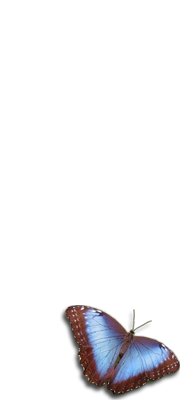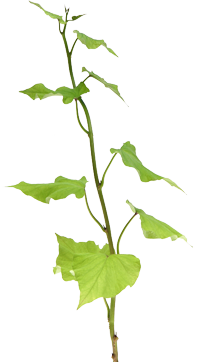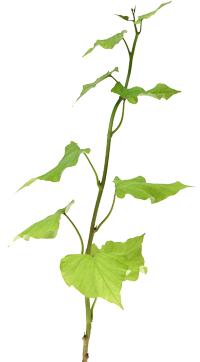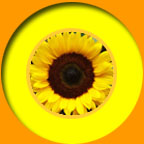FAQ's and Terms
What is Healing Touch?
For more information about Healing Touch, click here
What is Tai Chi?
According to the 2007 survey conducted by The National Center for Complementary and Alternative Medicine (NCCAM), people in the United States practice Tai Chi for various health-related purposes, including, but not limited to:
• For benefits associated with low-impact, weight-bearing, aerobic exercise
• To improve physical condition, muscle strength, coordination, and flexibility
• To improve balance and decrease the risk of falls, especially in elderly people
• To ease pain and stiffness—for example, from osteoarthritis
• To improve sleep
• For overall wellness.
Scientific research on the health benefits of tai chi is ongoing. Several studies have focused on the elderly, including tai chi's potential for preventing falls and improving cardiovascular fitness and overall well-being. Studies suggest that Tai Chi may enhance the immune system, improve cardio-vascular fitness, prevent falls, and improve overall well-being in older adults. Tai chi has also been studied for improving functional capacity in breast cancer patients and quality of life in people with HIV infection. Studies have also looked at tai chi's possible benefits for a variety of other conditions, including cardiovascular disease, hypertension, reduction or blood pressure, and osteoarthritis.
For more information about Tai Chi, please visit American Tai Chi and/or The National Center for Complementary and Alternative Medicine
What is Chi Kung?
“Chi” is pronounced chee and is usually translated to mean the life force or vital-energy that flows through all things in the universe. The second word, Kung, is pronounced gung, means accomplishment, or skill that is cultivated through steady practice. Therefore Chi Kung means to cultivate energy. Over 5,000 years old, Chi Kung may be viewed as the grandmother of other arts imported from China for maintaining health, increasing vitality, and healing, e.g. Acupuncture, Tai Chi, and Feng Shui.
Qigong practices can be classified as martial, medical, or spiritual, or a combination thereof. All styles have three things in common: they all involve a posture, (whether moving or stationary), breathing techniques, and mental focus. There are practices for gathering chi, circulating chi, using chi to cleanse and heal the body, storing chi, and emitting chi to heal self and others. Most Chi Kung practices involve slow gentle movements that may be done standing, walking, sitting, or lying down and may be easily adapted for those who are physically challenged, at varied fitness levels. No special clothing or equipment is needed.
For more information about Chi Kung (Qigong) visit Feel the Qi and The National Qiong Association
How is Tai Chi and Chi Kung different from traditional western exercise programs?
What are the benefits of Tai Chi and Chi Kung (Qigong)?
They activate what Norman Cousins called the “healing system, “ i.e. the integrated function of all bodymind systems—including the nervous, endocrine, immune, circulatory, and digestive systems—with the psyche. The practices are gentle and self-healing, and trigger a wide range of natural, physiologic mechanisms of self-repair that help to restore more healthy function in people with a variety or health conditions or diseases. The skilled practitioner becomes an expert in the language of chi within his or her own energy system, gaining the ability to proactively bring about a state of balance, thus promoting health, inner peace, and spiritual well-being.
What can I Expect in a Tai Chi and Chi Kung (Qigong) class?
- Opening the class-The class gathers in a circle to connect and harmonize their energies as well as to foster a sense of community. Class members “pool” their collective energies, offering support to one another and greater health benefits
- Warm Ups-These simple practices allow class members to shift gears from the busyness of their day into a state of greater internal awareness, embodiment, and presence. These practices focus on helping class members to release stagnant chi, ground, center, open the joints, and gather chi.
- Chi Kung/Qigong Practices-Simple movements, often performed in stationary positions, designed to circulate chi, strengthen, tonify, or clear specific organs and energetic systems of the body. Literally, Chi Kung can be translated as “energy work” and may be looked at as a way to perform acupuncture on yourself using breath, movement, sounds, touch, and mind focus.
- Tai Chi or Chi Kung (Qigong) Forms-Forms are sets of movements performed in a prescribed sequence. There are short and long forms, as well as many difference styles of forms. Each form has a particular focus and cultivates a particular aspect of body, mind, and spirit.
- Closing the class-The class gathers again in a circle to solidify and package the chi practice for “take-out” as well as to offer gratitude to themselves, each other, and the elements of the practice.
Sandy has studied Tai Chi since 1989 and Chi Kung Since 1999. Her teachers include David Harold, Golden Flower Tai Chi School, the Center for Taiji Studies, and Healing Tao USA. She is a certified in Tai Chi teacher and an Associate Healing Dao Instructor.
For information on Sandy’s Tai Chi and Chi Kung classes, visit Three Treasures
What is Energy Psychotherapy?...Energy Medicine? Energy Psychotherapy? BodyMind Psychotherapy?
An underlying assumption of Energy Psychotherapy is that every thought, emotion, and experience has a corresponding effect on the energetic flow systems of the body. Blocks in the flow of these systems are associated with a host of diseases on the physical plane and “dis-ease’ on the psychological plane. Energy Psychotherapy techniques involve some form of stimulating the meridian system of the body through touch, tapping, posture, or movement while at the same time focusing the mind on specific psychological problems or goals in order to release the block, restore flow, and achieve a greater overall state of both psychological and physical health and well-being. Examples of things that may be treated with Energy Psychology include emotions such as fear, guilt, shame, jealousy, anger, or anxiety; addictions, habits, and behaviors that interfere with healthy life functioning; as well as conditions with strongly observable physical components such as hypertension, insomnia, and chronic pain. Breathing methods, Chi Kung practices, affirmations, visualizations, and energy testing (sometimes called muscle testing originally developed in the field of Applied Kinesiology) may also be used.
Sandy draws on a variety of Energy Psychology tools when she works one on one with individuals, and also incorporates some of these practices into her classes and workshop. She has studied Energy Medicine with Judith Poole, MA, a Certified Energy Medicine practitioner; is certified by Fred Gallo, PhD, in Energy Diagnostic Treatment Methods (EDxTM); and as a BodyMind Psychotherapy Practitioner by Michael Mayer, PhD.
For more information visit these websites:
MindBodyHealing
Association for Comprehensive Energy Psychology
Energy Psychology
Energy Psychology: Acupoint Tapping to Change the Brain
What is the Enneagram?
Identifying your core personality type will help you to discover what motivates you, your coping strategies as you deal with life’s problems and interpersonal relationships, and give you a personalized map to healthy steps for personal growth and development.
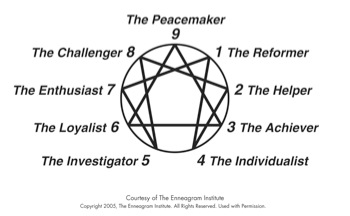
Sandy began studying the Enneagram in 1984 and holds a certification in Enneagram Technology through Lifeworx Learning. She has studied with Don Riso and Russ Hudson since 2001. She was a presenter at the National Enneagram Conference in 2004, and has been a frequent co-presenter with Andrea Isaacs, founder of EnneaMotion.
How can the Enneagram be useful to me?
The Enneagram can be useful source of self-knowledge because the descriptions of the types act a kind of "mirror" helping us to see features of our personality that are normally invisible to us. Within each of the types are patterns of behavior that demonstrate unhealthy, average, and healthy levels of development. At the average level of development and below, most of the time people function on a kind of "automatic pilot," reacting to life according to the pattern of their basic personality type. Often this state of reactivity to life events is accompanied by some sense of being a victim, trapped, or somehow being found lacking. The key to freedom for all the nine types lies in seeing clearly what the habitual patterns are which limit them, and permits then an openness to a fuller array of choices in how to respond to life’s challenges.
Working with the Enneagram helps us to restore balance to the personality structure, and helps us to orient ourselves to the higher spiritual and psychological qualities that each type has in abundance. Thus, at its best, the Enneagram invites us to look deeply into the mystery of our true identity and reveals that we are not our personality, but something more—a spiritual being who has lost contact with his or her true nature. Living out this realization shifts completely how we see ourselves, others, and the world, and brings us into a state of liberation, freedom, and joy.
For more info, visit The Enneagram Institute
What is Inquiry?
Many people who practice inquiry as an ongoing practice report life-changing results, such as alleviation of depression, decreased stress, and improved relationships; reduced anger, and greater peace of mind.
Sandy attended a live talk with Byron Katie and her husband, Steven Mitchell, in Asheville NC, and has been a student of her method for approximately 4 years.
For more information on Inquiry visit The Work Website
What is a Labyrinth?
The labyrinth combines the imagery of the circle and the spiral into a meandering but purposeful path. One feature labyrinths have in common is that they have one path that winds in a circuitous way to the center.
Labyrinths are currently being used world-wide as a way to calm the mind, recover balance in life, and encourage meditation, insight, self-reflection, reduce stress, and to rediscover innovation and celebration. Labyrinth walks are open to all people as a non-denominational, cross-cultural blueprint for well-being. The practice of labyrinth walking integrates the body with the mind and the mind with the spirit. Labyrinths can be found in medical centers, parks, churches, schools, prisons, memorial parks, spas, cathedrals and retreat centers as well as in people's backyards.
There is no right or wrong way to walk the labyrinth. No two people walk the path in the same way and those who walk the labyrinth many times report that each walk is unique and different from the others. One way to walk the labyrinth is to look at it as a metaphor for our life journey that takes place in three phases:
1. Releasing – As you walk from the outside to the center, letting go of the details of your life and letting your mind quiet.
2. Receiving – When you reach the center, relax, meditate, pray, listen for the “still small voice”.
3. Returning – As you leave the center, following the same path you took coming in, this time taking what you received in the center out to be a healing force in the world.

Sandy has been walking the labyrinth since 1987, and completed the labyrinth facilitator training with Lauren Artress in November 2009.
For more information on the labyrinth, visit Veriditas
